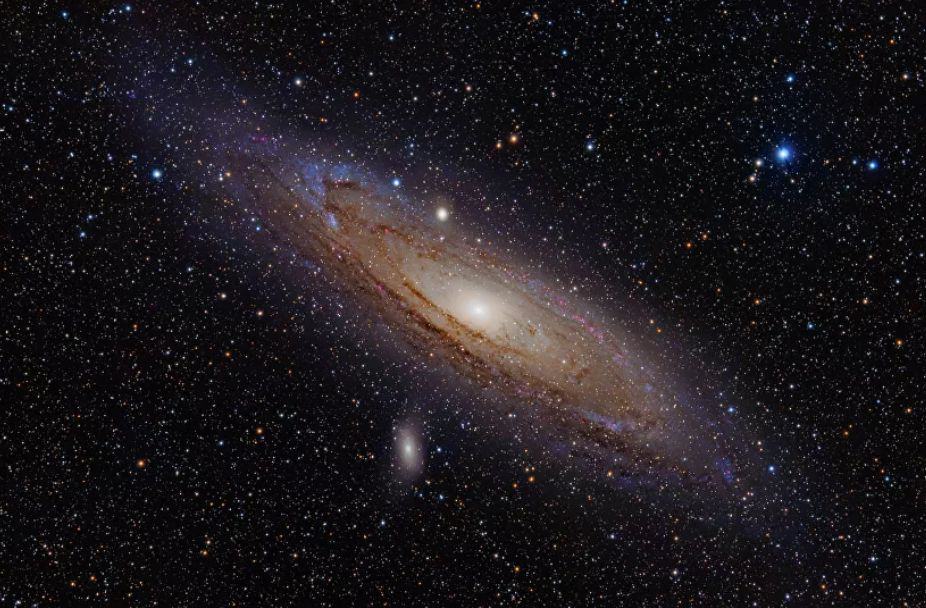With the help of the Hubble Space Telescope, a group of scientists has managed to map for the first time the immense halo of interstellar gas that surrounds Andromeda, a neighbouring galaxy to our own.
“Understanding the huge halos of gas surrounding galaxies is immensely important. (…) it’s full of clues regarding the past and future evolution of the galaxy, and we’re finally able to study it in great detail in our closest galactic neighbor,” explained study co-author Samantha Berek of Yale University.
According to NASA, scientists were surprised to discover this light, an almost invisible halo of diffuse plasma extends 1.3 million light-years from Andromeda, meaning it is already colliding with the Milky Way’s halo.
In the framework of this study, which has been the most comprehensive about a halo surrounding a galaxy, scientists also discovered that the Andromeda galactic halo has a layered structure made up of “two main nested layers and distinct gas shells”.
According to study leader Nicolas Lehner of the University of Notre Dame, the inner layer extends to about half a million light-years and “is much more complex and dynamic.” The outer layer, meanwhile, “is softer and warmer.”
“This difference is a likely result from the impact of supernova activity in the galaxy’s disk more directly affecting the inner halo,” Lehner explained.
Andromeda, also known as M31, is a spiral galaxy with about a trillion stars and a size comparable to the size of our Milky Way. Located at a relatively short distance of 2.5 million light-years, it can be seen as a “cigar-shaped smudge of light high in the autumn sky,” NASA explained.
Scientists believe that the halos of Andromeda and the Milky Way must be very similar since these two galaxies are quite similar. If visible to the naked eye, the gaseous halo of our neighbouring galaxy would easily be one of the most noticeable features in the night sky.
The Andromeda halo had previously been studied by Lehner’s team. In 2015, scientists discovered that it was “large and massive,” but there was no known indication of its complexity. Now, it has been mapped in more detail, allowing its size and mass to be determined with greater precision.
